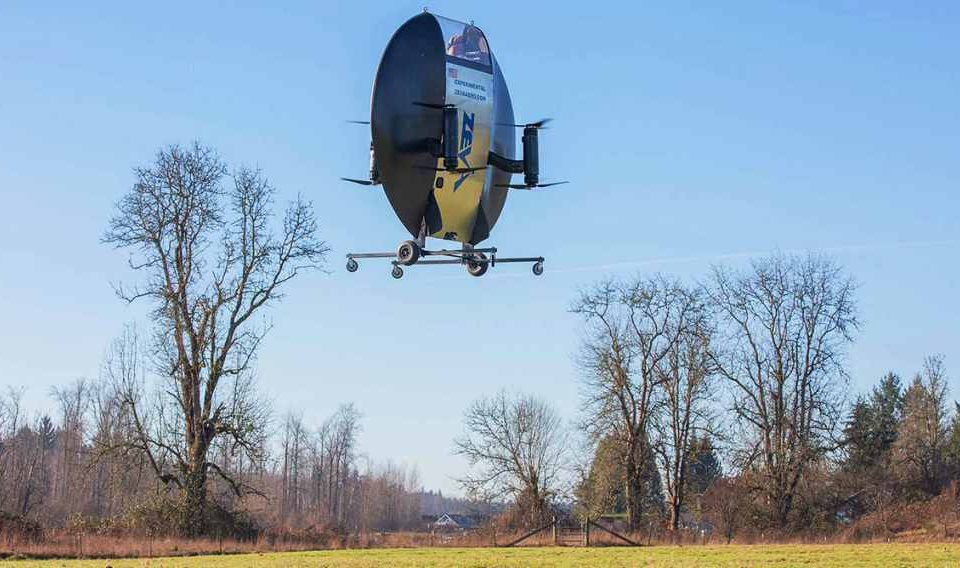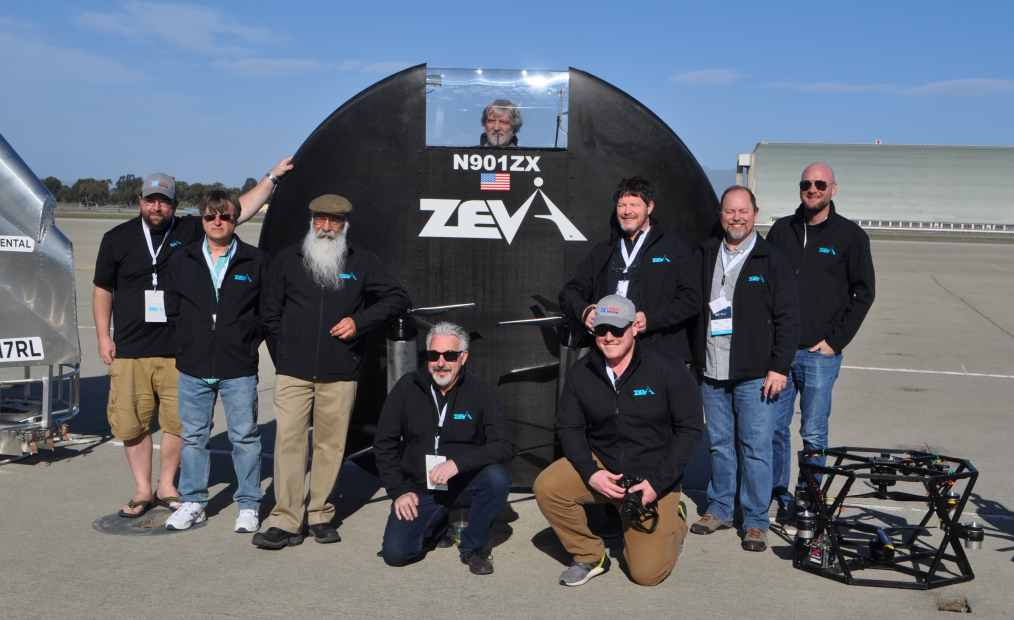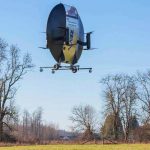The world’s first vertical flying saucer is finally here: Watch as the vehicle takes off

The flying saucer is finally here among the earthlings. It’s no longer an object flown by aliens in an unknown universe. Washington-based tech startup Zeva Aero recently unveiled a prototype of the world’s first flying saucer vehicle. Although it’s currently not at the same speed as the flying saucers you see in UFO movies, the one-seater vertical take-off and landing flying saucer vehicle is projected to cruise at speeds of up to 160mph with a range of up to 50 miles, optimizing point-to-point travel.
Dubbed ZEVA ZERO, the zero-emissions electric vertical takeoff and landing (eVTOL) aircraft reaches a critical milestone when the startup successfully conducted its test flight on January 9. The goal of the test was to demonstrate lift-off, travel and landing.
The uncrewed ZEVA ZERO demonstration aircraft completed four flights, totaling more than four minutes of controlled hovering, simulated taxiing maneuvers at slow speeds, and limited vertical climb maneuvers. Its compact airframe is designed for a single pilot and is small enough to fit in a standard automobile parking space. Ultimately, the ZEVA ZERO will be able to fly in a horizontal position allowing it to maximize aerodynamic efficiencies.
To fly the ZEVA ZERO, you’d have to move while lying on your stomach, face down. The ZERO is a personal flying machine that transitions from hover mode to forward flight mode. ZERO is a new class of aircraft that blends the best features of multi-copter with streamlined wing-body for improved range and efficiency.
Founded in 2017 by Stephen Tibbitts, the Zeva electric jet project grew out of Boeing’s GoFly competition to design an aircraft that could fit into a sphere 2.6 meters in diameter and then build a business on the back of that effort. ZEVA’s first vehicle is called Zero. The ultimate goal is to transform the transportation landscape for mission-critical travel.

Zeva Team
Stephen Tibbitts along with Ben Gould began the initial design studies and was accompanied by a growing team of engineers. The team was limited by the maximum wingspan and proposed a carbon-fiber wing-body in the form of a saucer. The device takes off and sits on the tail, and with a climb of low altitude, it goes into horizontal flight using the aerodynamics of the fuselage.
“It’s an octocopter,” Tibbitts said, pointing to the four motors on top and four at the bottom. “It’s a blended wing body and it generates lift as it’s flying forward.” The battery-powered ZEVA Zero will next be tested for forward flight.
“The customers that we view right now are first responders, medics that need to get on to the scene of an accident to treat trauma victims as soon as possible,” said Tibbitts, an engineer, and trained pilot.
Zeva Aero has already caught the attention of the US military. The Pentagon has also expressed interest in Zeva flying saucer, Tibbitts said. “And then we’ve been approached by a number of wealthy people that want to fly from their lake house to the city, and also off of their yachts.”
Zeva Aero aims to ultimately put a sustainable air vehicle in every garage. The commercial price tag, which is likely to start at around $250,000, could be out of reach for some commuters for now, but Gurbir Singh, Zeva Aero’s chief technology officer, is optimistic.
“As the battery technology continues to improve, this craft is only going to get better and be able to do more and more things as we go ahead,” he said. To learn more about opportunities with ZEVA, visit our equity crowdfunding campaign on StartEngine and sign up for their newsletter.
Below is a video of ZEVA Zero in action.

